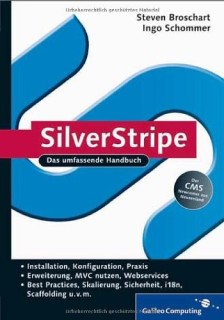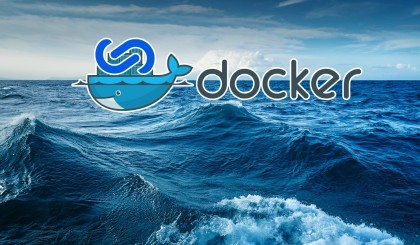 >
> A Personal Journey: Embracing Silverstripe CMS for Web Development Success
- Publication
- Author
- Florian Thoma
- Categories
- Services
- Reading time
- 4 minutes
I discovered Silverstripe CMS soon after the release of its initial open-source version, 2.3, and it has remained my preferred framework ever since. In this blog post, I share my journey of discovering Silverstripe, why I love it, and the challenges that come with choosing the right CMS. Hopefully, it helps you find the perfect CMS for your next web project!
Why I Needed a Web Framework

The main building of the Bern University of Applied Sciences Department of Technology and Information Technology at Quellgasse 21 in Biel/Bienne, Switzerland. Source: https://www.altstadt-biel-bienne.ch
I studied computer science at the University of Applied Sciences in Biel, Switzerland, graduating with a Bachelor’s degree specialising in Software Engineering in 2006. My academic interests included data structures, software architecture, and user-centric requirements engineering. However, my true fascination was with the internet — building systems accessible from anywhere in the world.
In my free time, a group of friends and I organised large parties and managed election campaigns for local politicians. These activities required websites, and as the computer science student in the group, I became responsible for creating them.
Naturally, I was looking for ways to streamline development, quickly launch sites, and ensure enough flexibility to adapt to each project’s unique needs.
My Search for a CMS Platform
During that period, I explored numerous Content Management Systems (CMS) and frameworks to find the perfect fit for my needs.
Java-Based Frameworks
Given my familiarity with Java from my studies, I initially looked into Java-based frameworks. However, I found the combination of Java and the Tomcat web server unstable and unnecessarily complex to set up, so I decided against them.
OpenText Livelink CMS
At my job with unic.com, I was part of a team building large websites for clients such as Jura coffee machines (jura.com), the Swiss Post (post.ch), Vitra (vitra.com), Suva (suva.ch), Ovomaltine/Ovaltine (ovomaltine.ch) and others, using OpenText’s Livelink CMS. While Livelink had many features I admired, its reliance on Windows and IIS, combined with exorbitant licensing costs, made it unsuitable for my personal projects.
WordPress
WordPress dominates the modern web, but its origins as a blogging platform are still evident beneath the surface. At its core, everything is a blog post, with customisations and extensions layered on top to adapt it for other purposes—essentially retrofitting blogging functionality into more diverse use cases. Additionally, the complex and often unintuitive extension-hook system made WordPress unappealing to me.
Joomla
I used Joomla for several projects but struggled to fully embrace it. Its rigid structures offered little freedom for customisation — a deal-breaker for me.
Drupal
Drupal is a highly powerful platform, but configuring and extending it can be quite complex. Additionally, its admin interface is not particularly user-friendly for content authors, which is something I’d rather my clients not have to navigate.
Other Systems
I also tried Typo3 but found it overly confusing for clients. Other systems, such as Mambo, PHP-Nuke, Django, Plone, and others, either had unsuitable tech stacks or failed to meet my requirements.
Discovering Silverstripe CMS

German version of the Silverstripe book by Steven Broschart and Ingo Schommer
After all that research, not finding something that fits my needs, I, like many others at the time, started building my own CMS. Of course, that gets very complex very quickly and issues like routing, permissions and templating systems can get out of hand.
Then, in 2009, I stumbled upon Silverstripe CMS’s first public release: Silverstripe 2.3. I immediately bought the Silverstripe book, first released in German and later translated into English. The combination of the book and online documentation gave me the confidence that Silverstripe was the solution to my web development challenges.
Silverstripe addressed the issues I’d encountered with other systems and my own CMS development. It approached things the right way while providing developers the freedom to innovate.
The Australian Silverstripe Community
At the end of 2009, I moved to Australia and was thrilled to find a thriving Silverstripe community.
Shane Weddell had recently founded Silverstripe Australia, a company dedicated to promoting the adoption of the open-source Silverstripe software. He envisioned building a network of agencies collaborating on Silverstripe projects and sharing opportunities.
The community was inspiring. I fondly recall Silverstripe meetups in Sydney — connecting with others in the Silverstripe space, discussing projects, sharing knowledge, and fostering collaboration.
Fully Embracing Silverstripe
I founded Innoweb and wholeheartedly embraced Silverstripe as my web development framework.
The modularity and flexibility of Silverstripe allowed me to serve a diverse range of clients, from small businesses to large corporations and organisations. I’ve developed everything from brochure websites to intranets, e-commerce platforms, video streaming solutions, and corporate websites with integrations into other systems.
Shifts in the Community
In 2017, Silverstripe Ltd in New Zealand intervened in a dispute with Silverstripe Australia over the use of the Silverstripe name. Despite the open-source nature of Silverstripe, Silverstripe Ltd sought greater control over the name and the Australian market.
Silverstripe Australia was forced to rebrand, and Shane Weddell left the community — a significant loss that remains deeply felt.
Unfortunately, Silverstripe Ltd’s lack of communication and engagement over the years has alienated many members of the Australian Silverstripe community. The collaborative spirit has largely diminished, though a few exceptional agencies continue to share projects within the community (You know who you are — thank you!).
Nevertheless, the global Silverstripe CMS community remains strong and supportive. Today, the primary hub for assistance is the Silverstripe CMS community Slack channel, a welcoming space where no question is too small or trivial. Experienced Silverstripe veterans follow the discussions, offering valuable insights and prompt answers to help users navigate challenges.
Looking Ahead
Together with Luke Fromhold, we’ve published over 110 open-source Silverstripe modules (under fromholdio and innoweb) alongside numerous private module bundles and helper modules.
We have built our stack of modules around Silverstripe to make development as streamlined and quick as possible, without sacrificing flexibility for unique project requirements.
We have been lucky to be part of this journey and with Silverstripe 6 being released later this year, we are looking forward to building many more sites on our favourite web development platform!
Related articles

Optimise page redering performance: Lower TBT with CSS content-visibility
- Publication
Discover how CSS content-visibility reduces long tasks and TBT on long pages, boosting Web Vitals and page rendering speed.

Silverstripe Attributable Module: Smarter Internal Linking for Better Engagement and SEO
- Publication
Modern websites often contain diverse content types—case studies, blog posts, product pages, services—and making meaningful connections between them isn’t just helpful for users, it’s critical…

Docker & Silverstripe: Smart Pairing or Overkill?
- Publication
Silverstripe’s modular architecture and developer-friendly nature make it a great candidate for modern deployment strategies. And Docker, with its promise of environment consistency and simplified…


